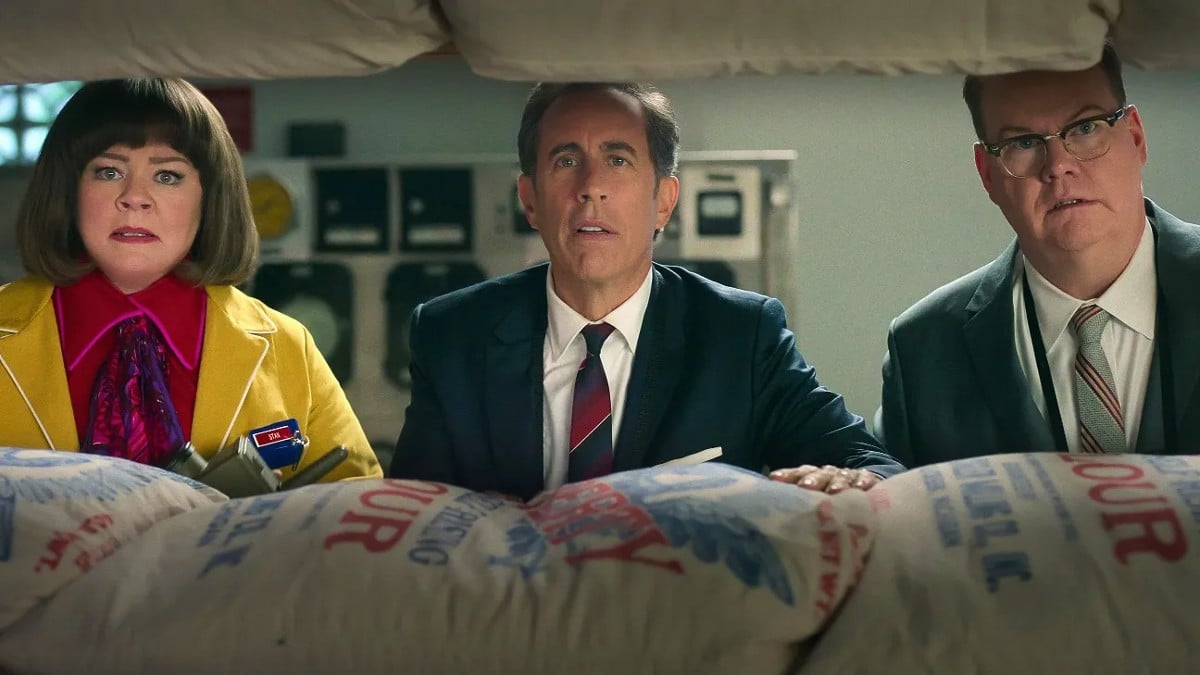Unfrosted recently enjoyed its Netflix premiere and has quickly attracted audiences with its hilarious spin on the Pop-Tart origin story. However, as viewers take in the amusing and zany story of breakfast pastry rivals, they’ll question if it is, indeed, the true story of the Pop-Tart’s creation.
Unfrosted marks the directorial debut of comedian Jerry Seinfeld and was co-written by him, Spike Feresten, Barry Marder, and Andy Robin. It follows the story of Bob Cabana (Seinfeld), an employee of Kellogg’s who seeks to create a revolutionary new breakfast pastry. However, his mission sparks an intense feud with Kellog’s primary rival, Post, which is also working to ring a new age of breakfast pastries. The feud gets out of hand, sparking an absurd sequence of events involving an evil milkman, a rioting Tony the Tiger, and a January 6 parody.
Naturally, by the end of the movie, viewers will be heavily skeptical about whether Unfrosted actually tells the true story of the Pop-Tart.
Is Unfrosted based on a true story?

Unfrosted is inspired by the true story of the Pop-Tart, but the movie is not an accurate retelling of that story. Seinfeld has been open about the fact that it’s a fictional retelling of a true story. He told Netflix, “The challenge of fictionalizing it is [that] we wanted to keep some of the reality of what happened. This really did happen in Battle Creek, Michigan, where Kellogg’s and Post were located, and they did compete to come up with this product, but the rest of our story is complete lunacy.”
As Seinfeld mentions, the movie’s setting is accurate, given that the Pop-Tart’s story began in Battle Creek in 1963. The city marked the birth town of two of the biggest cereal producers in the United States: Kellogg’s and the brand now known as Post Consumer Brands. In the years leading up to the 1960s, America’s food priorities began to shift as consumers became increasingly interested in convenience and efficiency, seeking breakfast food that didn’t require a significant amount of time in the kitchen. As a result, both Kellogg’s and Post Consumer Brands honed in on a toaster pastry. It was a convenient breakfast item that could be popped in the toaster and eaten any time of the day while boasting a long-lasting shelf life with no need for refrigeration.
Both companies quickly set about developing the perfect toaster pastry. The rivalry became particularly fierce when Post Consumer Brands was the first to announce its innovative toaster pastry, which it called “Country Squares.” Post Consumer Brands had figured out how to utilize foil wrappers to prevent the pastries from spoiling. The rectangular pastry with fruit filling could be eaten on the go, only needing an optional few seconds in the toaster or toaster oven beforehand. However, the company jumped the gun when it announced its Country Squares on February 16, 1964, as the product was not ready to be released.
Post Consumer Brands still needed to perfect its Country Squares recipe, which inspired Kellogg’s to rush to get its own toaster pastry out before its rival. Kellogg’s had been working on developing a toaster pastry since 1963. Although the Pop-Tarts website cites Kellogg chairman William E. LaMonthe as the visionary behind the pastry, William Post (no relation to Post Consumer Brands) is often credited for his major role in the pastry creation. While it’s true that the initial idea of Pop-Tarts came from LaMonthe, Post perfected it. Post was working as a planet manager at Hekman Biscuit Co. when, on a visit to Kellogg’s Grand Rapids plant, he was approached about the toaster pastry idea.
Despite criticism from his own boss, Post agreed to work on the toaster pastry and went on to make nearly 10,000 handmade samples to perfect and test his design. “Doc” Joe Thompson also aided LaMonthe in inventing the Pop-Tart with his idea to “create an ingenious hack on toast and jam.” Between Post, Doc, and LaMonthe, Kellogg’s was able to catch up with Post Consumer Brands and debuted the Pop-Tart in the final months of 1964. The pastries were initially called Fruit Scones, but the company decided Pop-Tart had a nicer ring to it, especially since it was a pun on the art movement known as Pop Art, which spread across the U.S. beginning in the 1950s.
Post Consumer Brands also sought a more appealing name, renaming its Country Squares as Toast’em Pop Ups in 1965. Despite the similarities between the products and their close debuts, Pop-Tarts took off while Toast’ems did not. The latter sold so poorly that Post Consumer Brands eventually sold them off to Schulze and Burch Biscuit Company. Toast’ems are still produced by Schulze and Burch today, but they’ve never gained the widespread fame of Pop-Tarts. In 2022 alone, consumers purchased an estimated 3 billion Pop-Tarts, with the toaster pastry industry earning the U.S. hundreds of millions of dollars annually.
It’s not surprising that Unfrosted took a more sensationalized approach to the story, as Kellogg’s and Post Consumer Brands have often done themselves. For example, there have long been rumors that Post Consumer Brands stole recipes from Kellogg’s. However, the origin story, credit, and allegations of who stole who’s work in the pastry toaster industry always differ depending on which company one asks. The original story already has elements of humor and absurdity—factors that Unfrosted simply multiplied tenfold for its fictional retelling.
(featured image: Netflix)









Published: May 7, 2024 05:29 pm